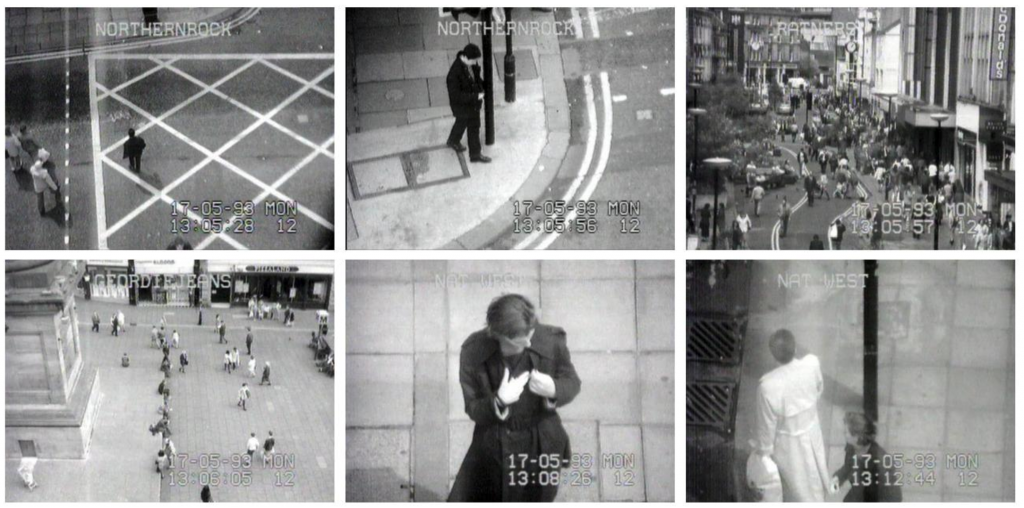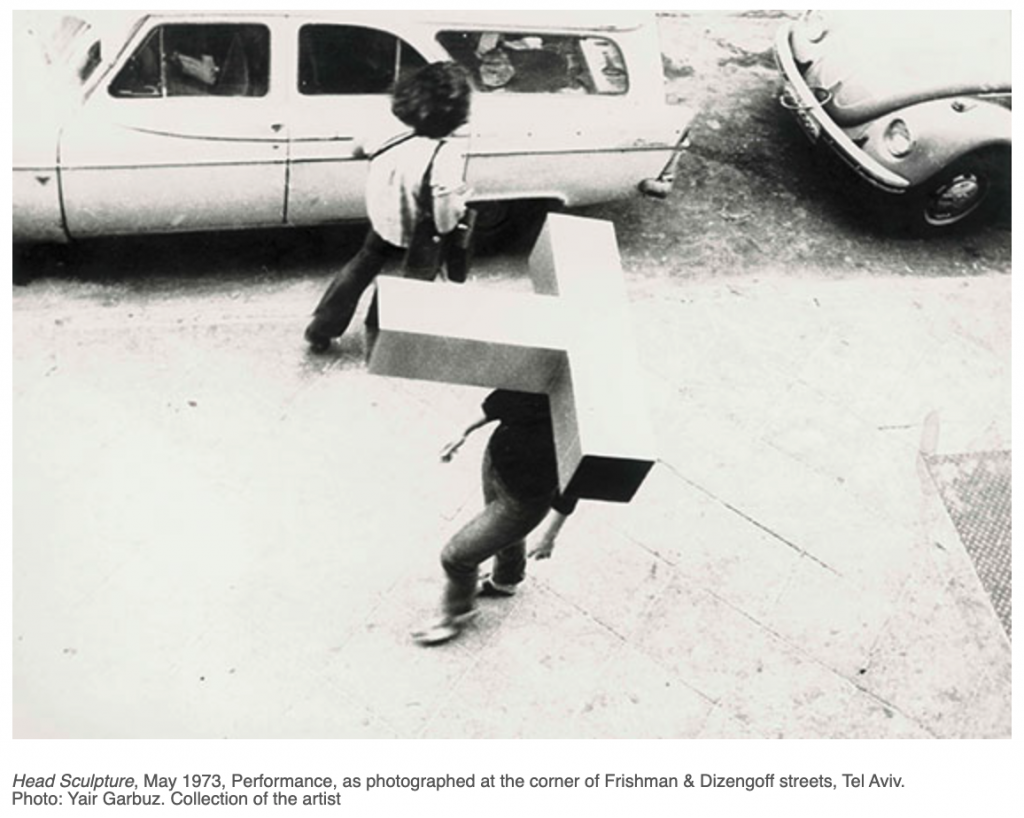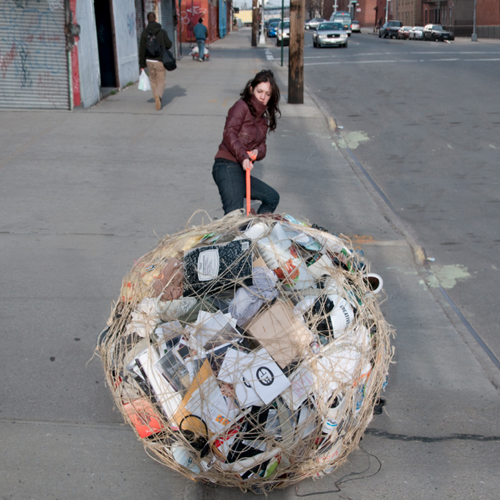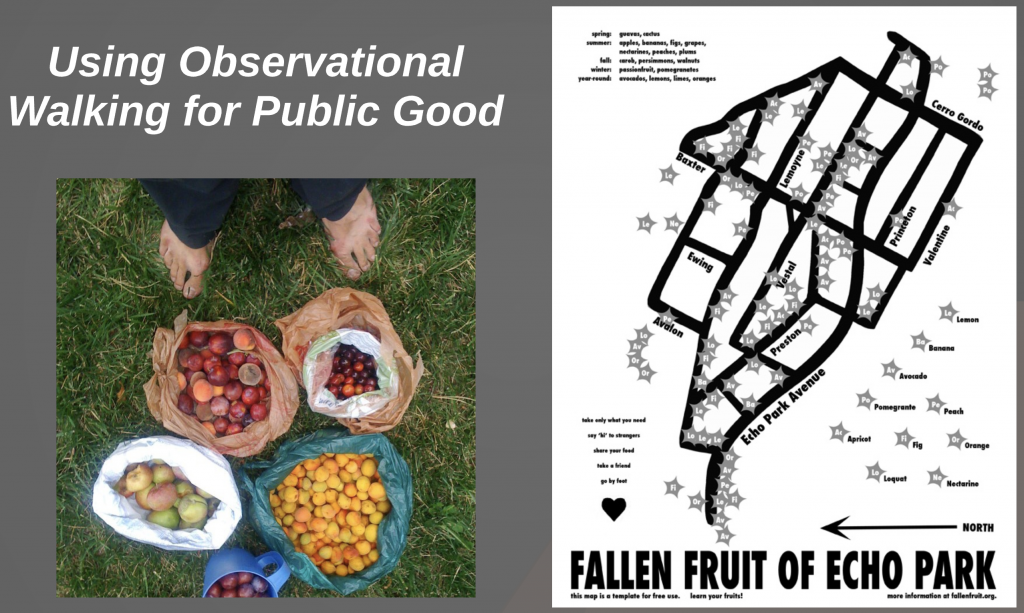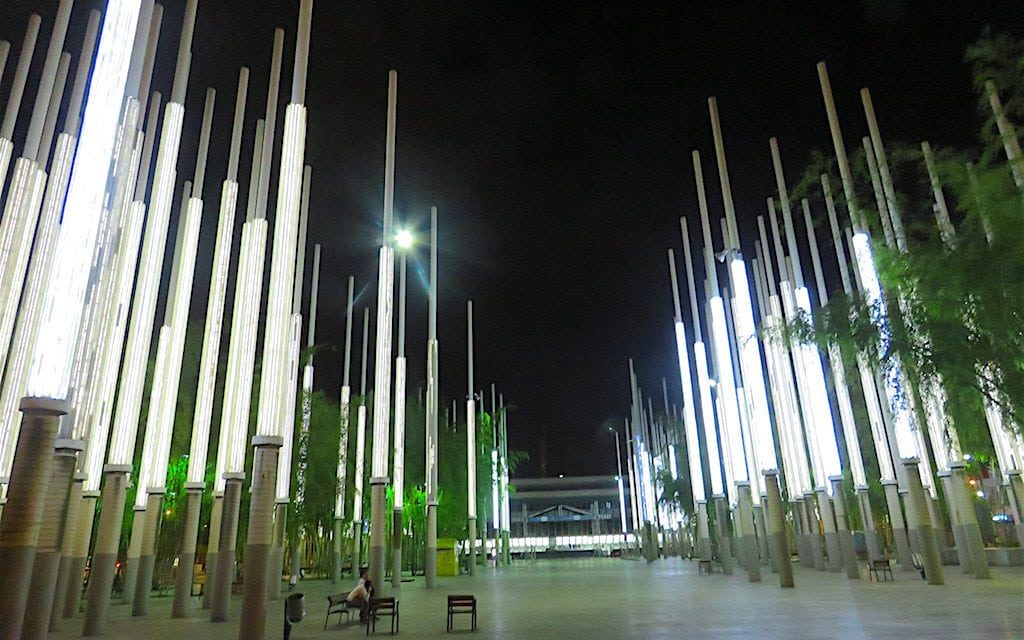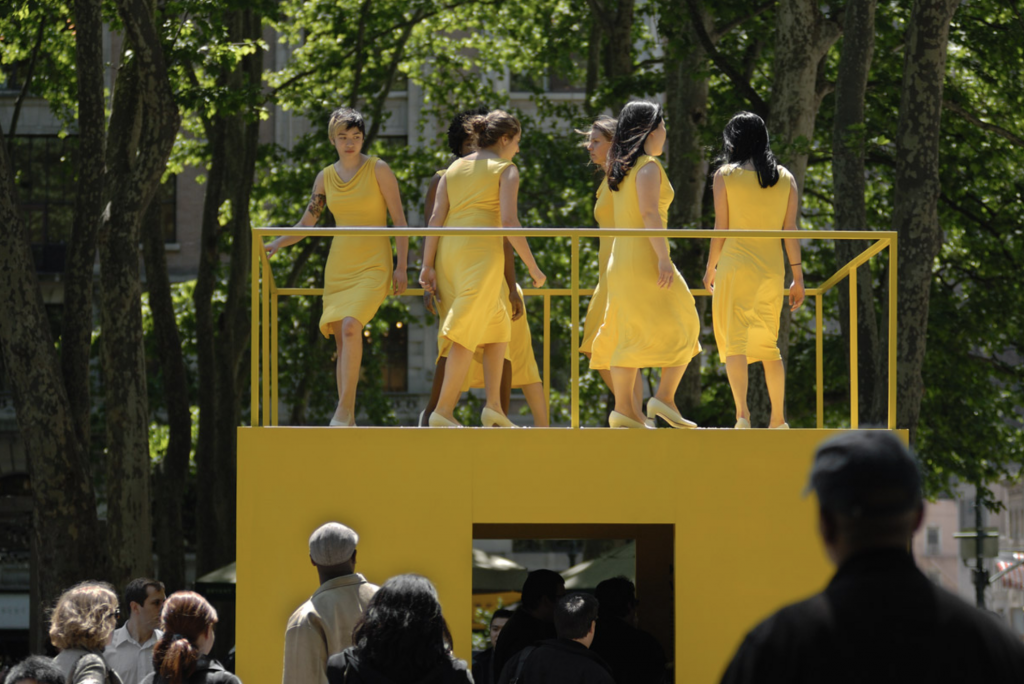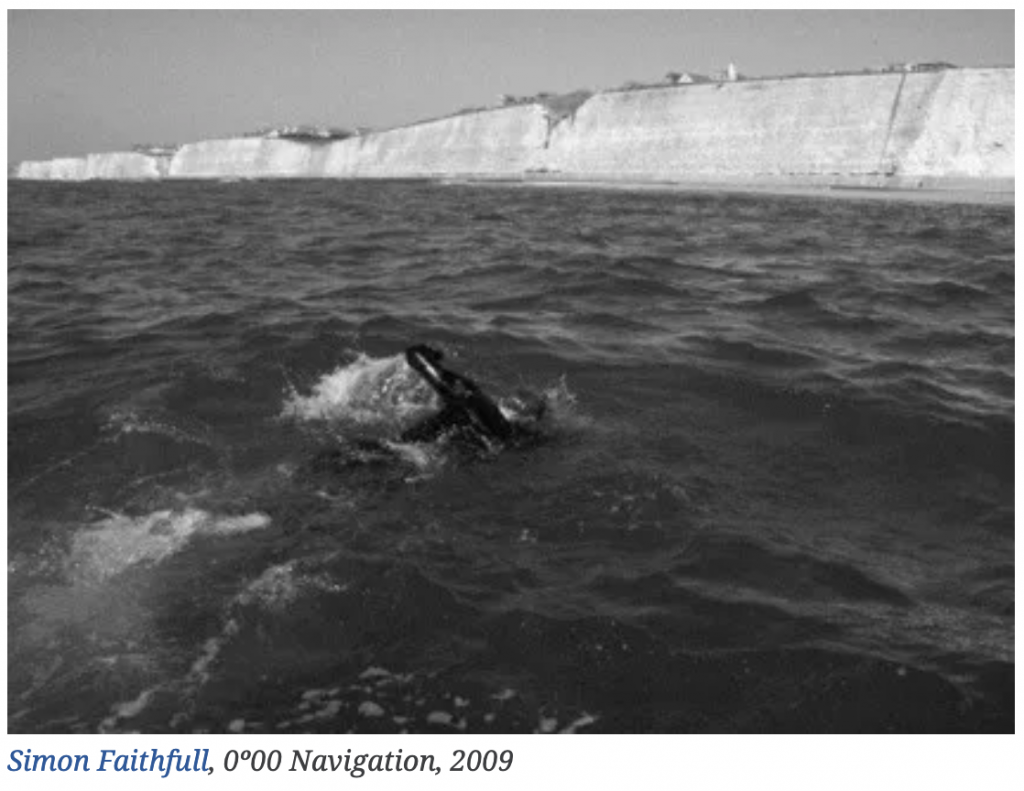High Wire is a room-sized video installation consisting of four projections and two lightboxes. Filmed at Red Road, a high-rise housing complex in Glasgow, it shows the noted French tightrope walker Didier Pasquette attempting to cross from one tower to another over a thin metal wire at a height of 90 metres. The large projections occupy the four walls of the space in which the work is exhibited, offering different views of the event. One shows a long view of the two tower blocks against the distant landscape, highlighting the dominance of the high-rise in its urban context. The second projects footage filmed from the top of one tower, the camera shifting shakily between the roof itself and the line of wire. The third and fourth projections offer further views of the rooftop, one from a distance and one close up. As the films begin Pasquette enters the frame, stepping off a small platform down to the level of the wire. A camera is strapped onto his helmet, revealing the source of the eagle-eye view of the scene, and captures a sweeping, panoramic view to the left, then to the right. It then catches glimpses of Pasquette unclasping his hands and feet, and calmly and purposefully lifting the long pole prepared for him to aid his balance. As he sets off into the void, Pasquette looks down, and his head-camera view provides a reeling, vertiginous sensation. He moves with precision and grace, carefully touching the wire with his toes before resting each foot on it. One third of the way along the wire, Pasquette stops and appears to be in trouble, with the rope shaking beneath him. Retaining his focus, he steps backwards, fast and composed, and in a few seconds he reaches the roof again, his crossing frustrated.
High Wire was made by the British artist Catherine Yass in 2008. It continues a preoccupation, seen in Yass’s earlier work, with architecture and urban systems, in particular the ways in which they can convey wider social and political concerns (see, for instance, her 1994 series Corridors, Tate T07065–T07072, and Descent 2002, Tate T13569). The choice of Red Road was originally a practical one, but it came to symbolise the aspirations of an apparently misconceived architectural utopia. Built in 1964–9 as part of Glasgow City Council’s slum clearance project, Red Road was the tallest residential building complex in Europe at the time. Inspired by the utopian ideas of the architect Le Corbusier (1887–1965), this dream of a brighter future was embraced by the local community. Yet a rise in crime and gang violence, bad maintenance, and perhaps a lack of a sense of ownership and engagement due to the scale of the complex, made residents feel vulnerable and insecure. Red Road became emblematic of the ill-fated housing ambitions seen across Britain in this period. In 2005, three years before Yass made High Wire, Glasgow Housing Association announced a £60 million regeneration plan for Red Road, slating the towers for demolition, to be replaced by around 600 low-rise private and council homes.
High Wire found an immediate resonance within this context, which for some exemplified the failure of the modernist utopian project, and in the installation this is paired with the frustrated attempts by Pasquette to realise his own dream. As Yass stated in 2008:
High Wire is a dream of walking in the air, out into nothing. But it has an urban background and the high-rise buildings provide the frame and support. The dream of reaching the sky is also a modernist dream of cities in the air, inspired by a utopian belief in progress. Every time I see Didier turning back I remember hearing him shout, from where I was standing on another rooftop, ‘C’est pas possible!’ But something was possible, he returned safely. And something emerged from the actuality of the walk, which was a moment when reality became more of a dream than the dream itself.
(Quoted in Glasgow International Festival of Contemporary Visual Art 2008, p.94.)
Yass’s four-screen video installation is accompanied by two photographic works of the same sky walk, printed as black and white negatives and presented on lightboxes. While the videos elicit an empathetic, almost physical response from the viewers, the grey, backlit landscape of the lightboxes presents a world that is unfamiliar and distant.
Further reading
Catherine Yass: High Wire, exhibition catalogue, Glasgow International Festival of Contemporary Visual Art, London and Glasgow 2008.
Sofia Karamani
October 2011
